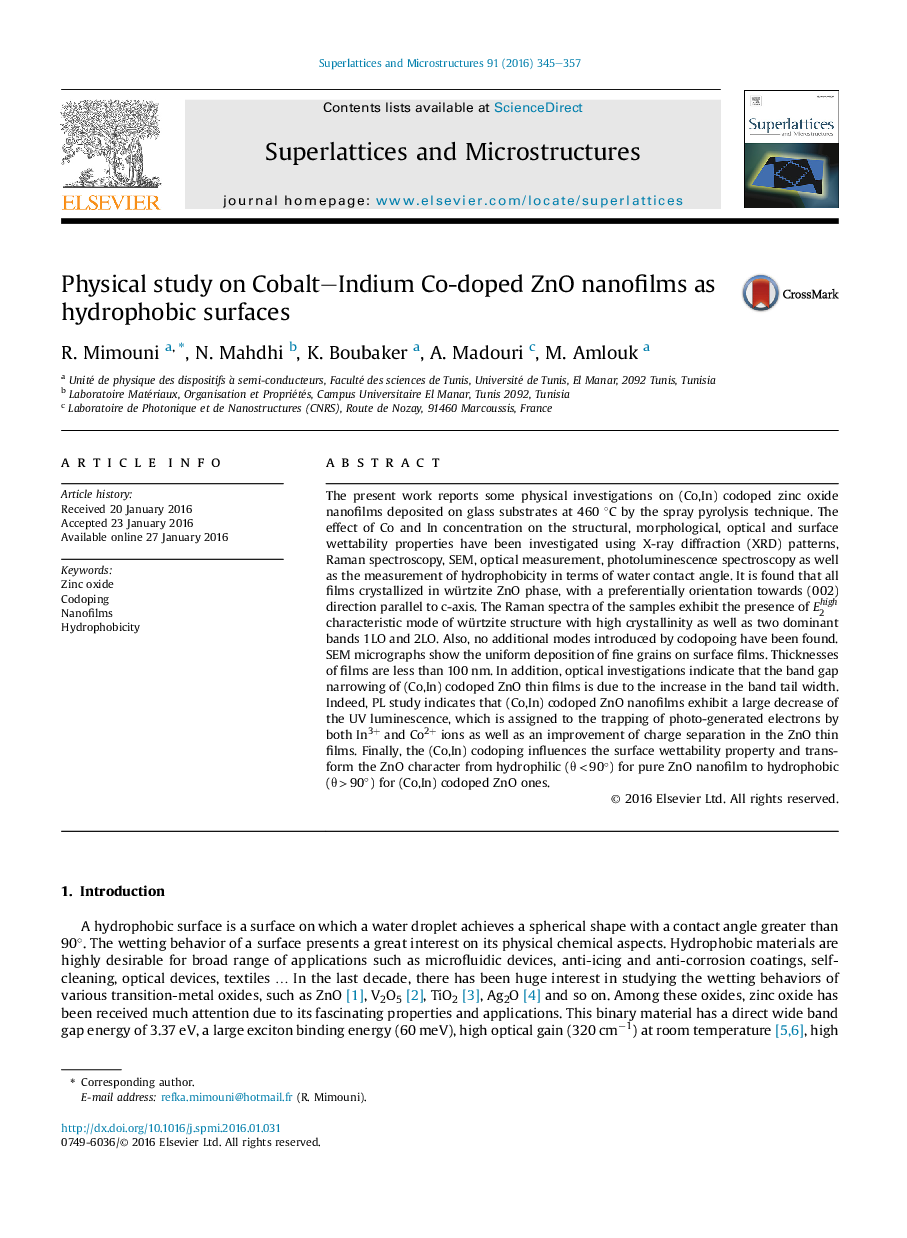| کد مقاله | کد نشریه | سال انتشار | مقاله انگلیسی | نسخه تمام متن |
|---|---|---|---|---|
| 1552716 | 1513210 | 2016 | 13 صفحه PDF | دانلود رایگان |

• (Co,In) codoped ZnO nanofilms on glass substrates were prepared using low-cost spray pyrolysis technique.
• XRD, Raman as well as SEM analysis confirmed the hexagonal Würtzite structure of (Co,In) codoped ZnO thin films with a preferentially orientation towards (002) direction parallel to c-axis.
• Optical investigations indicate that the band gap narrowing of (Co,In) codoped ZnO thin films is due to the increase in the band tail width.
• Wettability properties indicate that (Co,In) codoping transform the surface character of ZnO nanofilms from hydrophilic to hydrophobic.
The present work reports some physical investigations on (Co,In) codoped zinc oxide nanofilms deposited on glass substrates at 460 °C by the spray pyrolysis technique. The effect of Co and In concentration on the structural, morphological, optical and surface wettability properties have been investigated using X-ray diffraction (XRD) patterns, Raman spectroscopy, SEM, optical measurement, photoluminescence spectroscopy as well as the measurement of hydrophobicity in terms of water contact angle. It is found that all films crystallized in würtzite ZnO phase, with a preferentially orientation towards (002) direction parallel to c-axis. The Raman spectra of the samples exhibit the presence of E2high characteristic mode of würtzite structure with high crystallinity as well as two dominant bands 1LO and 2LO. Also, no additional modes introduced by codopoing have been found. SEM micrographs show the uniform deposition of fine grains on surface films. Thicknesses of films are less than 100 nm. In addition, optical investigations indicate that the band gap narrowing of (Co,In) codoped ZnO thin films is due to the increase in the band tail width. Indeed, PL study indicates that (Co,In) codoped ZnO nanofilms exhibit a large decrease of the UV luminescence, which is assigned to the trapping of photo-generated electrons by both In3+ and Co2+ ions as well as an improvement of charge separation in the ZnO thin films. Finally, the (Co,In) codoping influences the surface wettability property and transform the ZnO character from hydrophilic (θ < 90°) for pure ZnO nanofilm to hydrophobic (θ > 90°) for (Co,In) codoped ZnO ones.
Figure optionsDownload as PowerPoint slide
Journal: Superlattices and Microstructures - Volume 91, March 2016, Pages 345–357